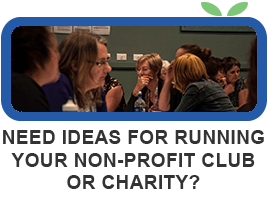Last updated October 3, 2014
If you’re new to Governance, it’s not okay to feel like everyone is speaking a foreign language. Unless someone has taken time to explain the terms, it’s no surprise that you’re feeling a little confused. But before you run screaming for the hills, check out this handy guide to Governance terms.
Board
‘Board’ or ‘the Board’ is one of several names used to identify the group of people responsible for governing (or overseeing) an organisation. Your ‘board’ may be referred to as the Board of Trustees, the Committee, Management Committee, Council or Governing Body depending on your legal form or constitution.
Trustee
‘Trustee’ is one of several names used to describe individuals who make up your Board. They may also be referred to as Board Members, Committee Members or Directors. Depending on your Constitution, your Trustees may be elected, appointed or a combination of both.
Officer
Although Boards act as a group, some Trustees take on extra responsibilities such as Chair or Treasurer. Trustees who take on these positions are called ‘Officers’ or Office Holders.
Chair or Chairperson
‘Chair’ is the title given to the person responsible for leading the Board. In some organisations this role is referred to as the President. The Chair (along with the CEO) is often the public face of an organisation, and they act as the link between management and the Board. They are most often responsible for running Board meetings, although this isn’t always the case.
Sub-Committee
A ‘Sub-Committee’ is a group of people assigned the task of overseeing a specific project or aspect of the organisation. A Sub-Committee is usually led by a Trustee, but depending on your constitution, the committee may also include people outside of the organisation. A Sub-Committee helps provide the Board with relevant information for decision making, but the Board maintains ultimate responsibility.
Governance
‘Governance’ refers to the decisions, processes, activities and relationships of your board that make sure your organisation is effectively and properly run.
Constitution
Your ‘Constitution’ is the book of rules that Trustees must follow in running the organisation. This may also be referred to as your Trust Deed, Governing Document or Charter.
Stakeholders
A ‘stakeholder’ is any person who has a ‘stake’ or vested interest in your organisation. This may include staff, volunteers, clients, members, donors, funders, supporters or a specific part of the community. For organisations that serve the community as a whole, their stakeholders can include the general public
As you get more involved in the community sector, you’re likely to come across other terms that need translating too. Post a comment here and we’ll do our best to provide you with an explanation.




